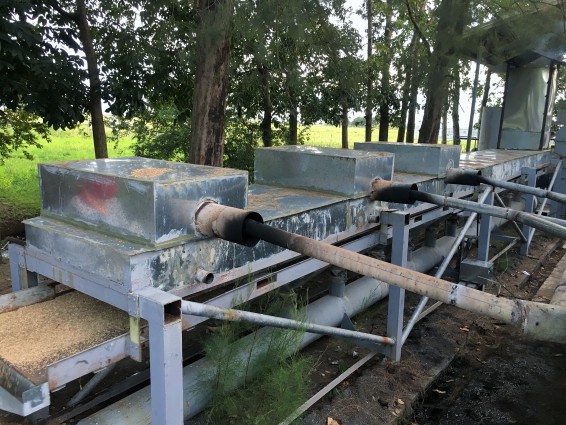Rapid decrease in moisture content (MC) without affecting grain quality is among the advantages of using the Rapid FIRE dryer that is now underway for public testing.
The study “Development of far infrared ray emitter rapid paddy dryer (Rapid FIRE)” led by PhilRice Scientist Engr. Manuel Jose C. Regalado has shown promising results in drying fresh paddy, which is seen to benefit traders, processors, and farmers during wet season.
This mechanical dryer targets a more cost-effective technology that uses lesser electricity, promises better sun-drying simulation, and produces quality dried paddy and milled rice outputs.
Initial results have shown that infrared ray or radiation transfer provides a rapid means for heating and drying a thin layer of the rice paddy. In 2.5 min of exposure time to infrared, grain MC could be reduced by 2.3 percentage points, i.e., from 16.4% to 14.1%. The ideal grain MC for rice paddy is 14% for milling, and 12% for seed production.
“The Rapid FIRE dryer could reduce grain moisture content by up to 3 percentage points in an hour. Flatbed and batch recirculating grain dryers can only reduce grain MC by 1.0 and 1.5 percentage points, respectively,” explains Engr. Regalado.
During a drying trial in 2016 wet season, Engr. Regalado’s team dried the 637-kg paddy harvest (mixed varieties) from 24% to16% MC in four passes using Rapid FIRE. The dryer had a throughput capacity of 780 kg wet paddy per hour, and exposure time to infrared ray was about eight min per pass.
In another drying trial, 1 metric ton of paddy with 14.5% MC was dried to 12.3% MC in two passes, with an average machine capacity of 800 kg/h, heat exposure of 13.5 min/pass, and MC reduction rate of about 1 percentage point/hour.
In the two trials, far infrared ray was used as heat stimulator that gave off sun-drying-like effect.
Engr. Regalado’s team did not see any significant difference on milling recovery and head rice yield between Rapid FIRE-dried and naturally dried paddy.
The dryer components were designed and assembled at the PhilRice’s Rice Engineering and Mechanization Division using locally available materials and equipment. This project is funded by the Philippine Council for Agriculture, Aquatic, and Natural Resources Research and Development (PCAARRD).





